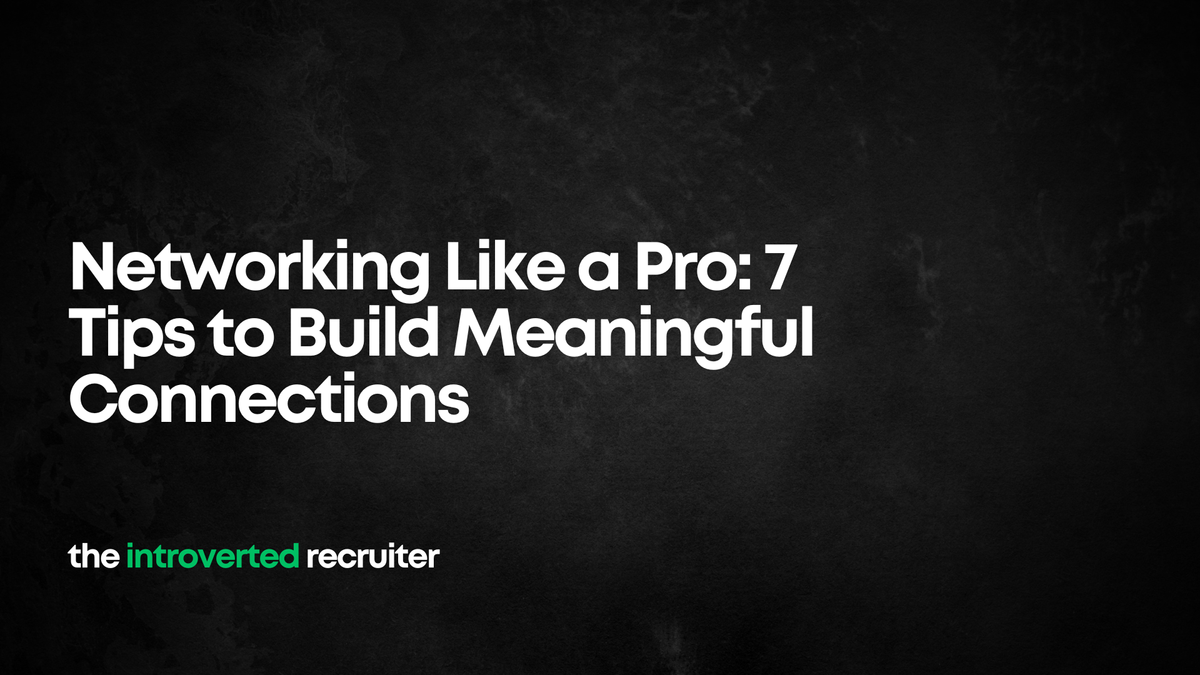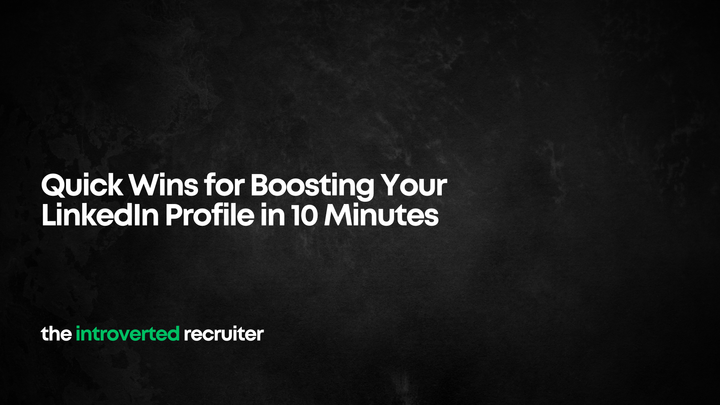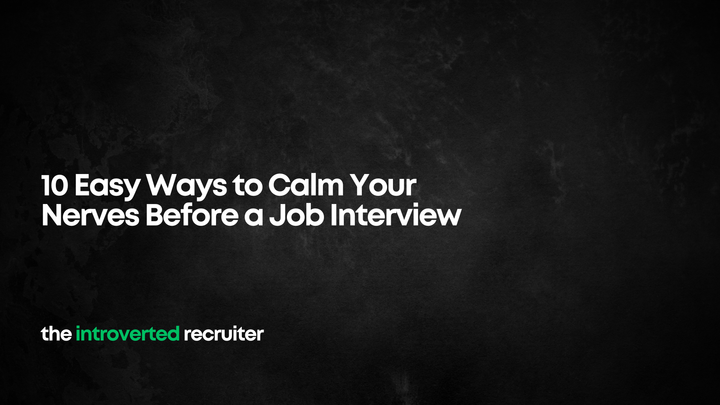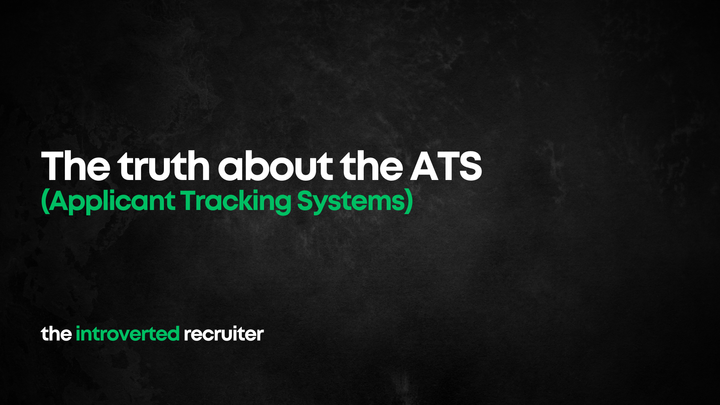Networking Like a Pro: 7 Tips to Build Meaningful Connections

Let’s be honest—most people hate networking. It’s awkward, uncomfortable, and often feels like forced small talk with strangers. But here’s the thing: networking is a game-changer when it comes to your career, and especially your job search.
You’ve probably heard that a huge chunk of jobs never get advertised (the so-called hidden job market), and the reality is, networking is often how you find out about those opportunities.
Networking isn’t about schmoozing or collecting business cards. It’s about building genuine, lasting relationships that can open doors in your career down the line. So if the idea of walking into a room full of strangers with a fake smile on your face makes you cringe, this guide is for you.
Here are seven tips to help you network like a pro, even if you’re not a natural extrovert.
1. Shift Your Mindset: Networking Isn’t About You
First things first, you need to change how you think about networking. If you go into it with a “what can I get out of this?” attitude, people will sense that immediately, and you’ll come off as self-serving. The key to good networking is to focus on building relationships—and that starts with giving, not taking.
Think of networking as planting seeds. You might not see immediate results, but over time, those connections can grow into something valuable. And remember, the goal is to form authentic relationships, not to land a job on the spot.
Action step: The next time you attend a networking event or send a LinkedIn message, focus on how you can add value to the other person. Maybe it’s sharing an interesting article, offering advice, or connecting them with someone in your network.
2. Leverage LinkedIn for Networking
In today’s digital-first world, networking doesn’t always happen in person. LinkedIn is an incredibly powerful tool for making meaningful connections, but too many people treat it like a digital resume and leave it at that. If you’re not regularly using LinkedIn to engage with others, you’re leaving opportunities on the table.
Here’s how to start using LinkedIn for networking:
- Engage with content: Comment on posts, share industry insights, and engage in discussions. The more active you are, the more visible you’ll be.
- Personalize your connection requests: Don’t just hit “Connect” and hope for the best. Add a personal note to every connection request. Mention something specific, like a recent post they shared or a common interest.
Example message:
Hi [Name], I really enjoyed your recent post about [topic]. I’d love to connect and hear more about your thoughts on [related topic].
Action step: Aim to leave a thoughtful comment or share an interesting article on LinkedIn at least once a week. This will help keep you on the radar of your network and potential new connections.
3. Attend Industry Events and Webinars
While LinkedIn is great, don’t underestimate the power of attending industry events, conferences, or webinars. These settings give you the chance to meet people face-to-face (or virtually) and form deeper connections.
Before you attend an event, do some homework. Who’s going to be there? Are there key speakers or attendees you’d love to meet? Having a game plan will help ease any nerves and give you a clear direction during the event.
If you’re attending a virtual event or webinar, engage with the chat function. It’s a low-pressure way to get involved and showcase your knowledge.
Action step: Find one industry event or webinar happening in the next month and register for it. Set a goal to introduce yourself to at least three new people and follow up with them afterward.
4. Ask for Informational Interviews
One of the best (and most underutilized) ways to network is to ask for informational interviews. This is when you reach out to someone in a role or industry you’re interested in and ask for a 15-20 minute conversation to learn more about their experience. You’re not asking for a job—you’re asking for advice. And people love to share their knowledge, especially if you approach them the right way.
Informational interviews help you build relationships without the pressure of job hunting, and they give you inside knowledge about industries, companies, and roles you might want to pursue.
Example message:
Hi [Name], I came across your profile on LinkedIn and noticed you’ve had a really interesting career in [industry]. I’m exploring options in [related field] and would love to learn more about your experience. Would you be open to a quick 15-minute call sometime next week?
Action step: Identify three people in your network (or extended network) whose career path you admire, and reach out to request an informational interview. Keep it short, polite, and specific.
5. Follow Up and Stay in Touch
One of the most common networking mistakes is failing to follow up. You might meet someone at an event, hit it off, and then… nothing. If you don’t stay in touch, that connection fades away and loses its potential value.
The key is to follow up within a few days of meeting someone. Send a quick message thanking them for their time and mentioning something specific from your conversation to jog their memory. Then, stay in touch over time—this could be as simple as sending an article you think they’d find interesting or congratulating them on a recent achievement.
Action step: After your next networking event or conversation, send a follow-up message within 48 hours. Then, set a reminder to check in with that person every few months to maintain the relationship.
6. Don’t Forget the Power of Weak Ties
Networking isn’t just about close connections or people you talk to regularly. In fact, some of the most valuable opportunities come from weak ties—the people on the fringes of your network. These are old colleagues, distant acquaintances, or even people you’ve connected with online but haven’t had a real conversation with.
Why are weak ties so valuable? Because they’re likely to be in touch with opportunities and information that your close circle isn’t. So don’t hesitate to reach out to people you haven’t spoken to in a while. A simple message to catch up can reignite the connection and open new doors.
Action step: Go through your LinkedIn or contact list and reach out to one person you haven’t spoken to in over a year. It can be as simple as, “Hi [Name], it’s been a while since we last connected. I’d love to hear what you’ve been working on lately.”
7. Be Authentic and Patient
Finally, the most important rule of networking is to be authentic. People can tell when you’re being disingenuous or just trying to get something from them. Focus on building real, lasting relationships, not just transactional exchanges. And remember, networking takes time—it’s not about immediate results.
Some connections might not pay off for months or even years, but the relationships you build today can open doors down the line. Stay patient, stay consistent, and keep showing up.
Action step: Approach your next networking opportunity with the mindset of building a relationship, not just looking for a quick win. Be patient and focus on how you can help others before thinking about what they can do for you.
Final Thoughts: Networking Is a Long Game
Networking isn’t about making quick transactions—it’s about building real, lasting relationships. By shifting your mindset, engaging on LinkedIn, attending events, and following up consistently, you’ll open doors that lead to the hidden job market and beyond.
The key is to keep at it. Networking takes time, but with patience and authenticity, it will pay off in ways you might not even expect.
Sign Up For My Newsletter
Sign up for my free newsletter on SubStack for all the latest content straight into your inbox as well as a free Job Search Guide & CV Template.
Follow Me
Find me on LinkedIn , TikTok , YouTube or Instagram where I share lot’s of practical no nonsense advice.



